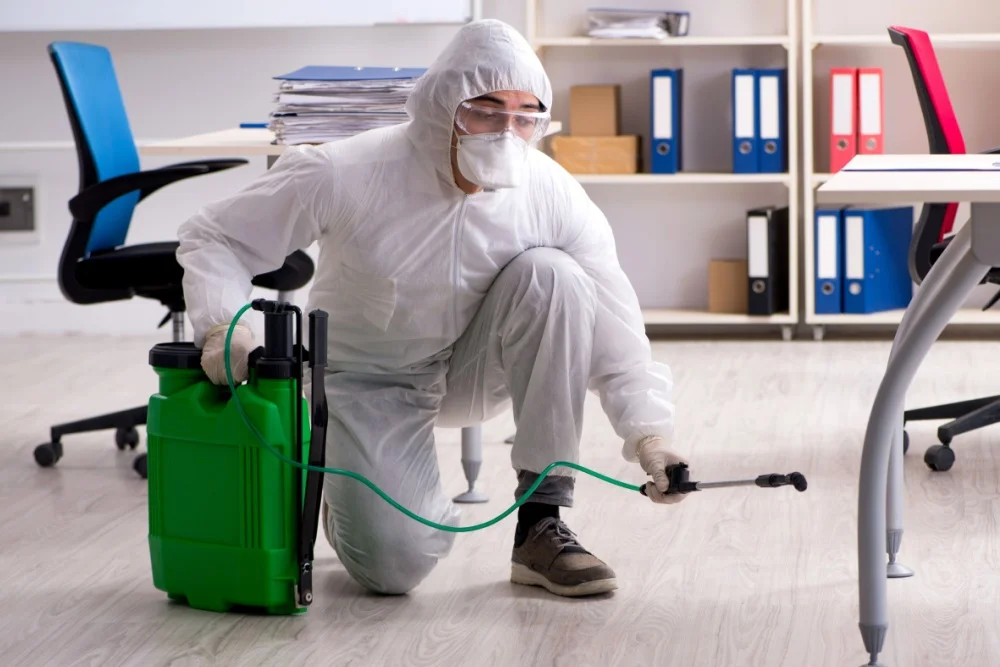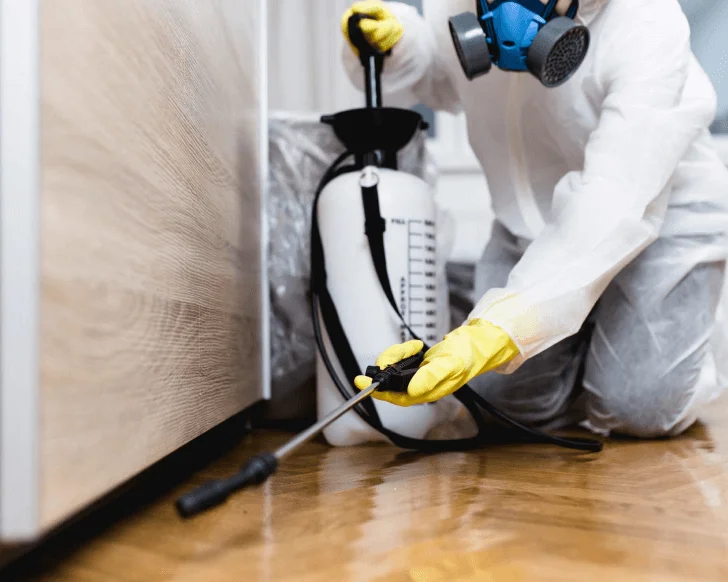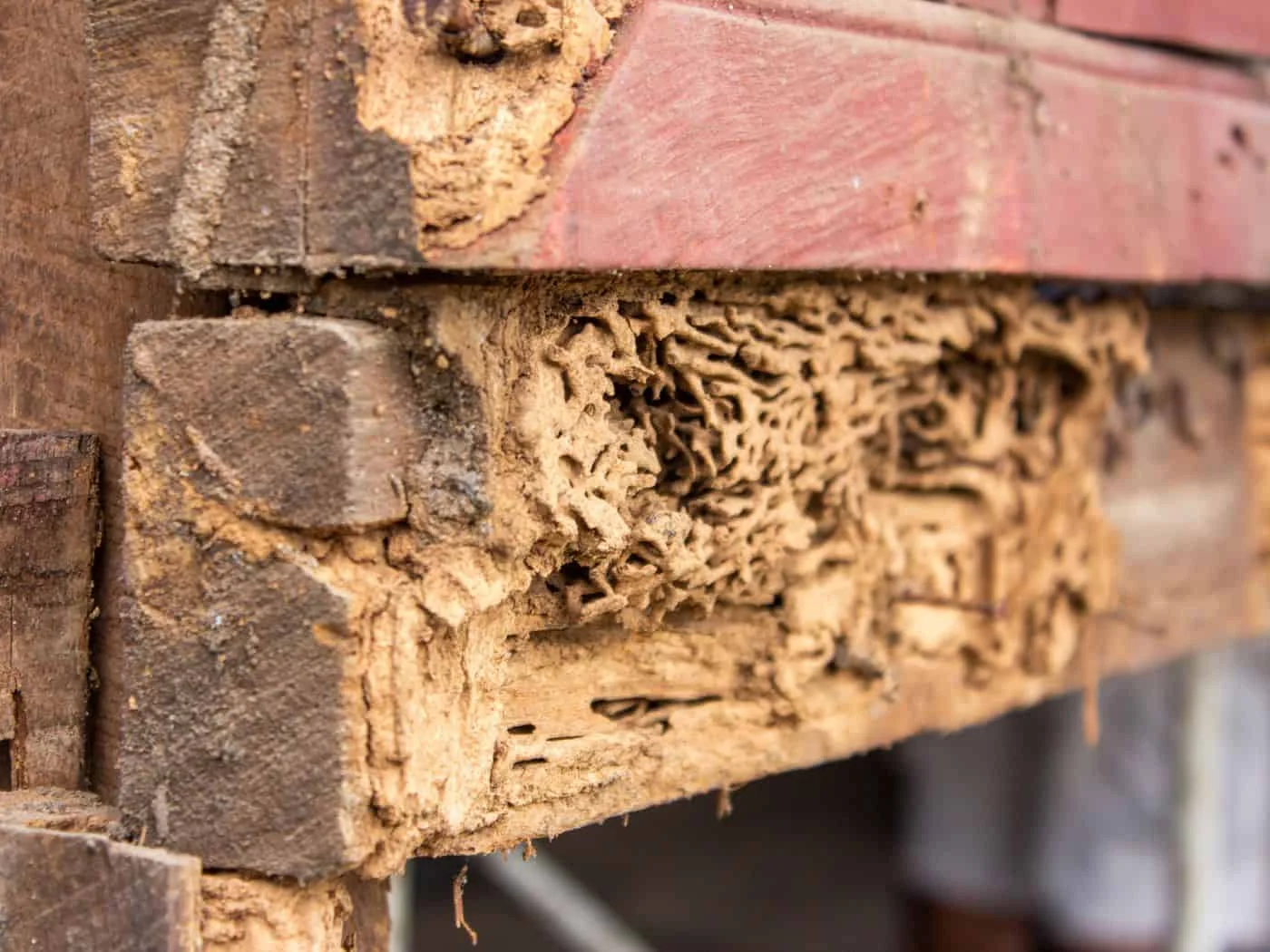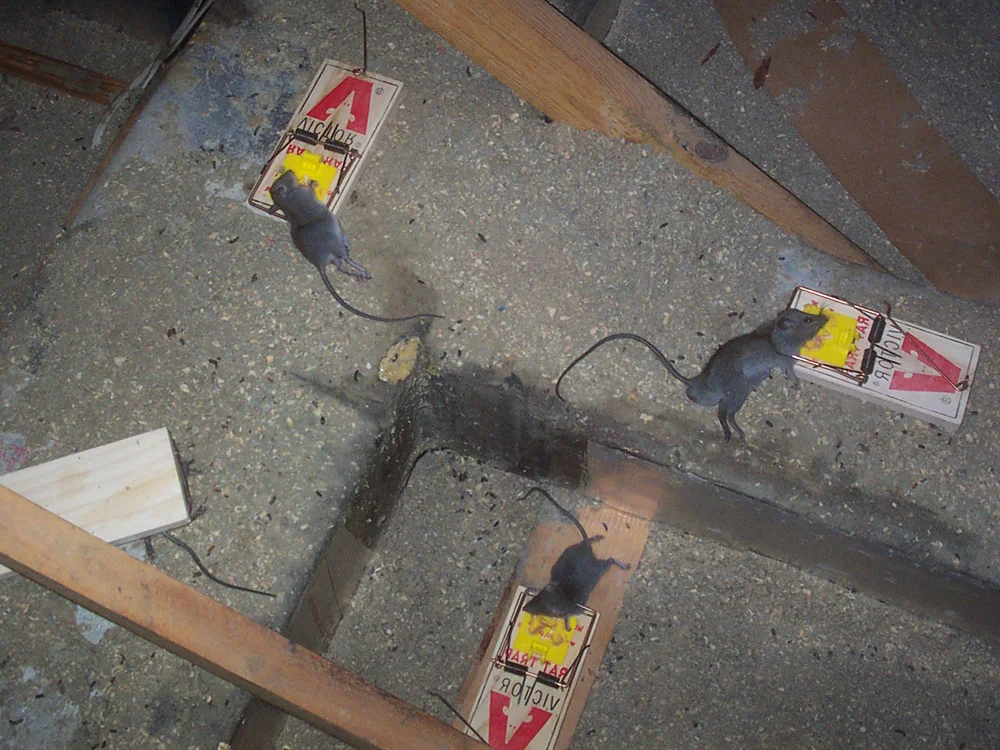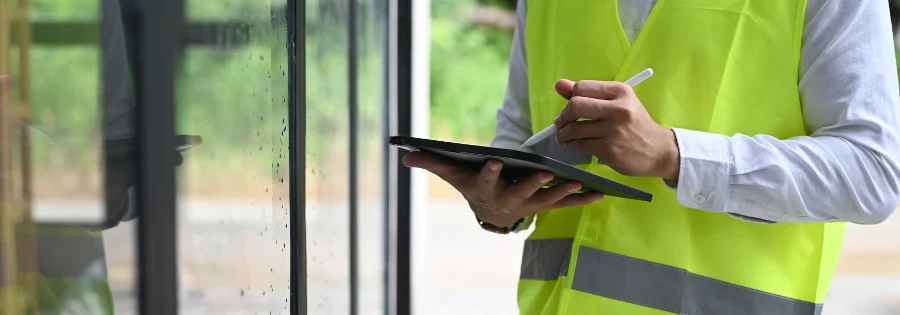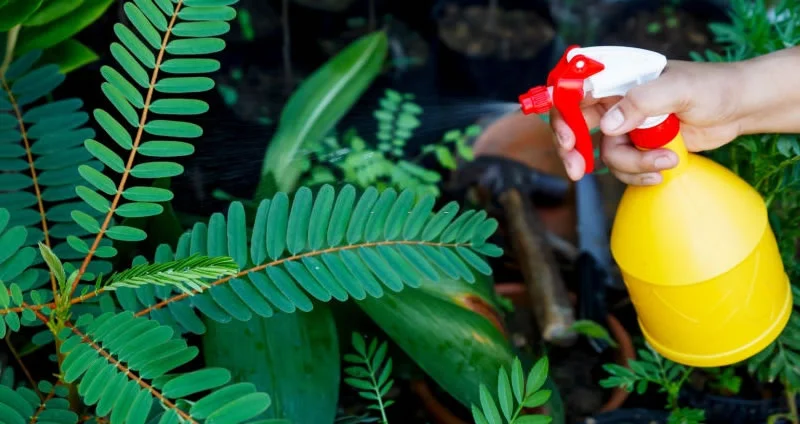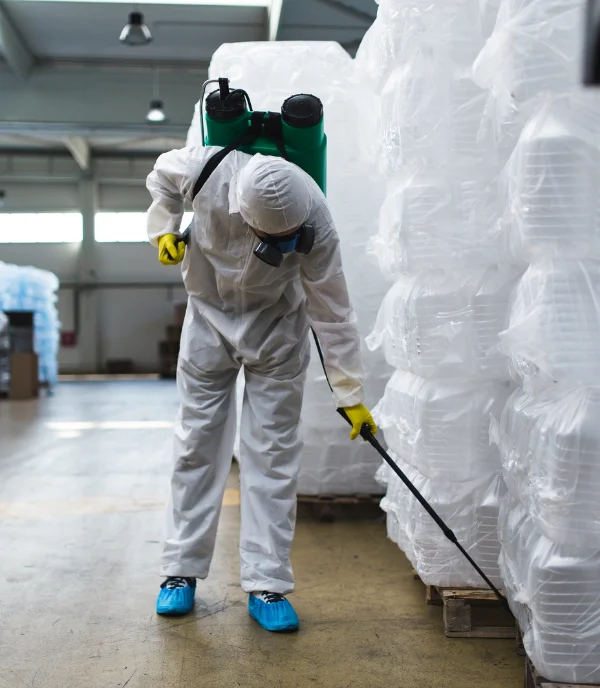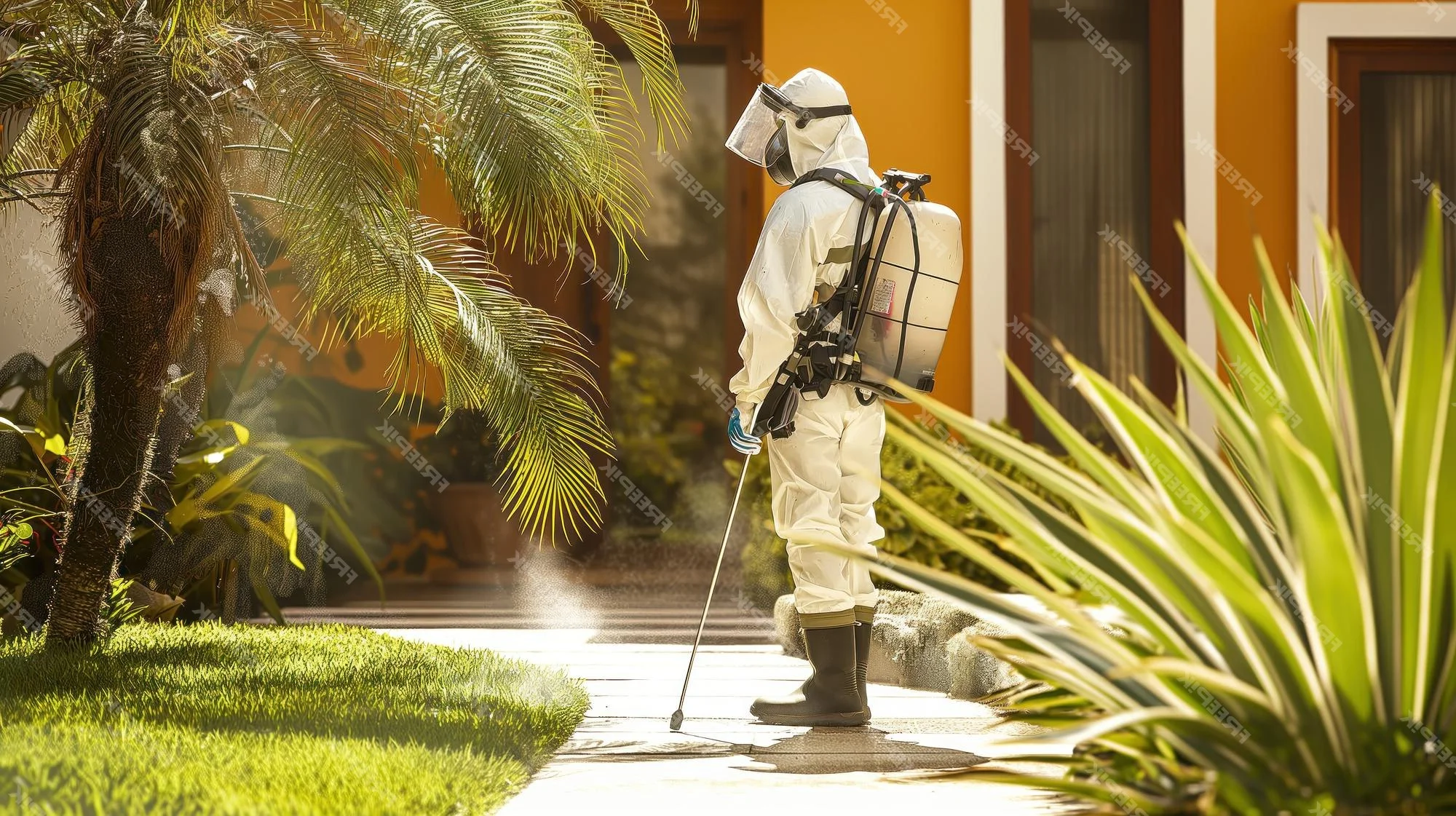Homeowners associations face the complex challenge of maintaining pest-free environments
across diverse properties while balancing individual homeowner needs with community-wide
standards. Effective HOA pest control requires more than just treating individual
properties – it demands coordinated strategies that address common areas, prevent pest
migration between units, and maintain the aesthetic appeal that preserves property values
throughout the community.
From condominiums and townhomes to single-family developments under HOA management, each
community type presents unique pest control challenges. Professional HOA pest management
services provide the coordination, expertise, and consistency needed to protect entire
communities while ensuring compliance with association guidelines and local regulations.
In this comprehensive guide, we'll explore how strategic community pest control programs
create healthier, more valuable, and more enjoyable living environments for all residents.
Transform your HOA's pest management approach! Our specialized team offers
coordinated HOA pest solutions
PROVEN and comprehensive
community management programs that protect property values and resident satisfaction.
Schedule your HOA consultation now!
HOA Pest Control Challenges and Solutions
Homeowners associations encounter unique pest management challenges that require specialized
approaches beyond traditional residential services. Understanding these challenges helps
HOA boards make informed decisions about community pest control strategies:
-
Multi-property coordination HOA communities require synchronized treatments
across multiple properties to prevent pests from simply moving between units.
Uncoordinated individual treatments often prove ineffective when pests can easily
relocate to nearby untreated properties within the same community.
-
Common area responsibilities Pools, clubhouses, playgrounds, and landscaped
areas are HOA responsibilities that require specialized pest management approaches.
These areas often attract pests that then migrate to individual properties, making
community-wide treatment essential for long-term success.
-
Architectural Guidelines compliance Many HOAs have strict guidelines about
exterior modifications, chemical applications, and maintenance practices that can
impact pest control options. Professional services must work within these constraints
while still providing effective protection.
-
Budget considerations and cost allocation HOA boards must balance effective
pest control with budget constraints while determining how costs should be allocated
between association funds and individual homeowner responsibilities.
-
Resident communication and compliance Successful community pest management
requires resident cooperation, from allowing access for treatments to following
prevention guidelines. Clear communication and education are essential for program success.
Professional HOA pest management services address these challenges through
comprehensive programs that coordinate individual property treatments with common
area management, ensure compliance with association guidelines, and provide clear
communication protocols that keep all stakeholders informed and engaged.
HOA Community Types We Serve
Different types of HOA-managed communities require customized pest control approaches
based on their unique characteristics, resident demographics, and management structures.
Our specialized programs address the specific needs of various community types:
Condominium Communities
Professional pest management for condominium communities and shared living spaces
Condominium communities present unique challenges with shared walls, common
HVAC systems, and interconnected utilities that can facilitate pest movement
between units. Condo HOA pest control requires coordinated treatments
that address both individual units and common areas while working within the
constraints of shared building systems and association bylaws.
Our condominium programs include regular monitoring of common areas,
coordinated unit treatments that prevent pest migration, and specialized
approaches for high-rise buildings that may face different pest pressures
on various floors. We work closely with property management to ensure
minimal disruption to residents while maintaining effective protection.
Townhome Communities
Coordinated pest control for townhome communities with shared structures
Townhome communities combine elements of single-family and multi-family
pest control with shared walls, common landscaping, and HOA-maintained
exterior areas. Townhome pest management addresses the unique
challenges of attached housing while respecting individual property
ownership and HOA common area responsibilities.
These communities benefit from coordinated perimeter treatments, shared
landscape management, and synchronized interior treatments that prevent
pests from moving between attached units. Our programs also address
common areas like mailbox clusters, playgrounds, and community parking
areas that can harbor pests.
Single-Family HOA Communities
Single-family home communities under HOA management require pest control
strategies that respect individual property ownership while addressing
community-wide pest pressures. These communities often have extensive
common areas, uniform landscaping, and architectural guidelines that
impact pest control approaches.
Our single-family HOA programs focus on common area management, coordinated
treatment timing, and prevention strategies that address community-wide
risk factors while allowing individual homeowners to customize their
specific pest control needs. We work with HOA boards to develop guidelines
that support effective pest management across the community.
Mixed-Use Communities
Communities that combine residential, commercial, and recreational spaces
require comprehensive pest management that addresses diverse pest pressures
and usage patterns. Mixed-use developments often include restaurants,
retail spaces, and office areas that create different pest attraction
and harborage opportunities.
These complex communities benefit from integrated programs that coordinate
commercial and residential pest control while ensuring that pest problems
in one area don't spread to others. Our mixed-use programs include
specialized treatments for different space types and coordinated scheduling
that minimizes disruption to both residents and businesses.
Common Pests in HOA Communities
HOA communities face pest challenges that can quickly spread across multiple
properties if not addressed comprehensively. Understanding these common
threats helps associations develop effective prevention and treatment strategies:
Termites
Comprehensive termite protection preserving HOA community property values
Termites represent one of the most significant threats to HOA communities,
particularly those with similar construction methods and ages across
multiple properties. Subterranean termites can establish colonies that
affect numerous homes simultaneously, while consistent landscaping and
irrigation systems often create ideal conditions for termite activity.
Community-wide termite prevention programs provide coordinated
protection that's more effective and cost-efficient than individual
treatments. Annual inspections, synchronized treatment schedules, and
monitoring programs help detect and address termite activity before
it causes significant damage to community property values.
Rodents
Professional rodent control protecting HOA community homes
Rodent problems in HOA communities can spread rapidly through connected
utilities, shared walls, and common landscaping areas. Mice and rats
often establish territories that span multiple properties, making
individual treatments less effective than coordinated community-wide
approaches that address the entire rodent population simultaneously.
Effective community rodent management includes securing common
areas like dumpster locations and utility areas, coordinating exclusion
work across similar construction features, and implementing monitoring
programs that detect rodent activity early before populations become
established throughout the community.
Mosquitoes
HOA communities with pools, water features, and extensive landscaping often
struggle with mosquito problems that affect residents' ability to enjoy
outdoor amenities. Common irrigation systems and decorative water features
can create numerous breeding sites that require professional management
to control effectively.
Community mosquito control programs address breeding sites across all
common areas while providing barrier treatments that protect outdoor
spaces during peak mosquito season. Coordinated treatments are more
effective than individual efforts because they address the source
populations that affect the entire community.
Ants
Ant colonies can quickly establish territories that span multiple HOA
properties, particularly in communities with consistent landscaping and
irrigation. Fire ants, carpenter ants, and sugar ants each present
different challenges that require specialized approaches and community-wide
coordination for effective control.
Successful ant management in HOA communities involves identifying and
treating colony locations across the entire development while addressing
environmental conditions that support ant populations. Community programs
prevent colonies from simply relocating to nearby properties when
individual treatments are applied.
Benefits of Professional HOA Pest Management
Professional HOA pest management services provide significant
advantages over individual property treatments or DIY approaches.
These comprehensive programs protect community investments while
simplifying management responsibilities for HOA boards and providing
better outcomes for residents.
Coordinated pest management enhances property values, reduces individual
costs through economies of scale, and ensures consistent protection
across the entire community. Professional providers also handle
regulatory compliance, resident communication, and documentation
requirements that support effective HOA governance.
-
Enhanced property values Consistent pest control across the community
prevents infestations that could damage individual properties or detract
from overall community appeal. Well-maintained pest management contributes
to stable and increasing property values for all residents.
-
Cost efficiency through economies of scale Community-wide programs
leverage bulk purchasing and coordinated scheduling to provide better
value than individual service contracts. Shared costs for common area
treatments benefit all residents while reducing individual expenses.
-
Simplified HOA management Single vendor relationships streamline
contract management, billing, and communication. Professional providers
handle resident coordination, compliance documentation, and regulatory
requirements that support effective association governance.
-
Consistent service standards Professional programs establish uniform
protocols that ensure all areas receive appropriate attention. This
consistency prevents pest problems from developing in overlooked areas
that could later impact the entire community.
-
Regulatory and compliance support Professional providers stay
current with changing regulations and help ensure that community pest
management practices comply with local health codes, environmental
requirements, and HOA bylaws.
Ready to elevate your HOA's pest management? Our specialized
community pest control programs provide the comprehensive
protection and professional coordination your association deserves –
contact us today for your customized proposal!
Comprehensive HOA Service Programs
Annual Pest Prevention Programs
Comprehensive annual inspections maintaining community-wide pest prevention
Our annual HOA pest prevention programs provide year-round
protection through scheduled treatments, regular monitoring, and
seasonal adaptations that address changing pest pressures throughout
the year. These programs prevent pest problems before they develop
rather than simply reacting to infestations after they occur.
Annual programs include quarterly treatments for common areas,
coordinated residential services, seasonal specialty treatments
for specific pests, and regular inspections that identify potential
problems early. This proactive approach proves more cost-effective
and less disruptive than emergency treatments for established infestations.
Common Area Management
HOA common areas require specialized pest management that balances effectiveness
with safety for residents of all ages. Common area pest control includes
pools, clubhouses, playgrounds, fitness centers, and landscaped areas that
can attract pests and serve as staging areas for property invasions.
Our common area programs use integrated approaches that emphasize prevention,
habitat modification, and targeted treatments when necessary. We coordinate
with facility managers to minimize disruption to community activities while
ensuring that amenities remain comfortable and pest-free for resident enjoyment.
Emergency Response Services
HOA communities need rapid response capabilities for pest emergencies that
could impact resident safety or community activities. Our emergency pest
response services provide immediate attention for situations like wasp
swarms near community events, sudden rodent infestations in common buildings,
or pest problems that threaten scheduled association activities.
Emergency services include 24/7 availability for critical situations,
expedited treatment protocols, and immediate communication with HOA management
to coordinate response efforts and inform residents about any necessary
precautions or temporary area restrictions.
Sustainable HOA Pest Management
Modern HOA communities increasingly prioritize environmental sustainability
and resident health, making eco-friendly pest solutions an important
consideration for association pest management programs. Integrated Pest
Management (IPM) approaches minimize chemical usage while maintaining
effective pest control through prevention, monitoring, and targeted
treatments only when necessary.
Sustainable approaches are particularly valuable in HOA communities
because they protect children using playgrounds and pools, preserve
beneficial insects that support community landscaping, and maintain
the environmental quality that residents value. These methods often
prove more cost-effective long-term by addressing root causes rather
than just treating symptoms.
| Sustainable Approach |
HOA Community Benefits |
Implementation Examples |
| Integrated Pest Management |
Reduces chemical dependency; maintains ecosystem balance;
provides long-term cost savings through prevention focus.
|
Monitoring programs for early detection; habitat modification
in landscaping; targeted treatments only when thresholds are exceeded.
|
| Habitat Modification |
Eliminates pest attractants naturally; enhances community
aesthetics; provides permanent solutions without ongoing treatments.
|
Landscape design changes; drainage improvements; vegetation
management to eliminate pest harborage sites.
|
| Biological Controls |
Safe for children and pets; protects beneficial insects;
maintains natural ecosystem balance in community areas.
|
Beneficial nematodes for grub control; predatory insects
for aphid management; biological larvicides for water features.
|
| Physical Exclusion |
Prevents pest entry without chemicals; provides long-term
protection; reduces need for future treatments.
|
Sealing gaps in community buildings; installing screens;
barrier installations around vulnerable areas.
|
HOA Communication and Coordination
Successful HOA pest management requires clear communication protocols
that keep residents informed while ensuring compliance with treatment
schedules and community guidelines. Professional providers work with
HOA boards to establish communication systems that support program
effectiveness and resident satisfaction.
Resident Notification Systems
Professional coordination ensuring clear communication with HOA residents
Effective communication ensures that residents are properly informed
about treatment schedules, any precautions needed, and program benefits.
HOA pest control communication includes advance notices through
multiple channels, clear instructions for preparation and reentry,
and ongoing updates about program results and adjustments.
Communication protocols typically include email notifications, community
website updates, posted notices in common areas, and door hangers for
individual treatments. Clear, consistent messaging helps build resident
support for community pest management programs and ensures compliance
with treatment requirements.
Board Reporting and Documentation
HOA boards need comprehensive documentation to support decision-making,
budget planning, and regulatory compliance. Professional pest management
providers supply detailed reports that include treatment records, monitoring
results, recommendations for improvements, and documentation that supports
association governance requirements.
Regular reporting helps boards track program effectiveness, plan for
future needs, and demonstrate due diligence in protecting community
assets. Documentation also supports insurance claims, property sales,
and regulatory compliance requirements that may affect the association.
Resident Education Programs
Educated residents are partners in effective pest management. Our
HOA resident education programs include workshops, newsletters,
and communication campaigns that help homeowners understand their role
in community-wide pest prevention efforts.
Education topics include landscape maintenance practices that discourage
pests, early warning signs residents should report, and coordination
with community treatment schedules. Well-informed residents contribute
significantly to program success while reducing the need for reactive
treatments.
HOA Pest Control Cost Management
HOA boards must balance effective pest control with budget constraints
while ensuring fair cost allocation between association funds and individual
homeowner responsibilities. Professional providers help associations
develop cost-effective programs that provide maximum value for community
investment.
| Cost Factor |
Community Program Advantages |
Budget Planning Considerations |
| Economies of Scale |
Bulk purchasing reduces per-unit costs; coordinated scheduling
improves efficiency; shared common area expenses benefit all residents.
|
Annual contracts provide predictable costs; volume discounts
available for larger communities; reduced administrative overhead.
|
| Prevention vs. Reaction |
Preventive programs cost less than emergency treatments; early
detection prevents major infestations; consistent maintenance preserves values.
|
Upfront investment in prevention pays long-term dividends;
emergency reserves needed for unexpected pest issues.
|
| Service Customization |
Programs tailored to community needs avoid unnecessary services;
seasonal adjustments optimize cost-effectiveness; monitoring reduces waste.
|
Initial assessment determines actual needs; flexible programs
adapt to changing conditions; performance metrics guide adjustments.
|
| Long-term Value |
Property value protection exceeds program costs; resident satisfaction
reduces turnover; consistent maintenance prevents major problems.
|
ROI typically achieved within first year; property value benefits
compound over time; reduced liability exposure protects association.
|
Budget Planning Support
Our HOA specialists provide detailed cost analyses and budget planning
support to help boards make informed decisions about pest management
investments and develop sustainable funding strategies.
Seasonal HOA Pest Management
Spring (March-May)
- Community-wide termite inspections
- Mosquito breeding site elimination
- Ant colony prevention treatments
- Common area landscape preparation
Focus: Establish protective barriers and address
winter damage before pest populations expand across the community.
Summer (June-August)
- Active mosquito control programs
- Pool and water feature maintenance
- Wasp and hornet management
- Community event area preparation
Focus: Maintain outdoor comfort during peak
community activity season and protect recreational amenities.
Fall (September-November)
- Rodent exclusion preparation
- Common building winterization
- Overwintering pest prevention
- Landscape cleanup coordination
Focus: Prepare community infrastructure for winter
and prevent pest entry into heated community spaces.
Winter (December-February)
- Indoor common area monitoring
- Community facility inspections
- Spring program planning
- Resident education initiatives
Focus: Monitor indoor community spaces and develop
comprehensive strategies for the upcoming pest season.
HOA Success Stories
"Switching to PestControl100's community-wide program reduced our
pest control costs by 30% while significantly improving results.
Our residents are thrilled with the coordinated approach, and we
haven't had a major pest issue in over two years."
- Patricia R., HOA Board President, Meadowbrook Commons
★★★★★
"The termite prevention program has been a game-changer for our
40-unit townhome community. The coordinated inspections and treatments
give our homeowners peace of mind, and property values have remained
strong even in a challenging market."
- Michael T., Property Manager, Riverside Townhomes
★★★★★
"Managing pest control for 200 condos was a nightmare until we
partnered with PestControl100. Their communication system keeps
residents informed, their treatments are effective, and their
reporting makes my job so much easier."
- Sandra K., Community Manager, Harbor View Condominiums
★★★★★
Frequently Asked Questions
How does HOA pest control billing typically work?
HOA pest control billing can be structured several ways depending on community
preferences. Common approaches include: association-wide contracts funded
through HOA fees for common areas and optional individual participation;
bulk purchasing programs where the HOA negotiates group rates but individual
homeowners contract directly; or comprehensive community programs where all
pest control costs are included in association fees. We work with each HOA
to determine the most cost-effective and equitable billing structure.
What happens if only some homeowners want to participate in the community program?
Partial participation can still provide community benefits, though full
participation is most effective. We can design programs that treat common
areas and participating properties while establishing monitoring zones
around non-participating properties to prevent pest spread. We also offer
educational programs to help non-participating residents understand the
community-wide benefits and often see participation increase over time
as residents observe the program's effectiveness.
How do you handle pest control in communities with strict chemical restrictions?
Many HOAs have environmental guidelines or resident concerns about chemical
usage. We specialize in Integrated Pest Management approaches that emphasize
prevention, exclusion, and targeted treatments using the least toxic effective
methods. Our programs can be customized to meet specific community guidelines
while still providing effective pest control through habitat modification,
physical barriers, biological controls, and precision application techniques.
What documentation do you provide for HOA record-keeping requirements?
We provide comprehensive documentation including service records, treatment
maps, monitoring reports, recommendations for community improvements, and
compliance certificates when required. Our reporting systems can be customized
to meet specific HOA governance requirements and provide the documentation
needed for board meetings, annual reports, insurance requirements, and
regulatory compliance. Digital access portals allow authorized HOA personnel
to access records anytime.
Advanced Technology for HOA Pest Management
Modern HOA communities benefit from advanced pest management technologies
that provide more effective monitoring, treatment, and reporting capabilities.
Smart pest management systems can monitor common areas continuously,
provide early warning of pest activity, and generate detailed reports that
support HOA decision-making and resident communication.
Digital platforms streamline communication between pest control providers,
HOA management, and residents while providing transparency and documentation
that supports effective community governance. These technological solutions
enhance program effectiveness while reducing administrative burden on
association staff and board members.
-
Digital monitoring systems Automated sensors in common areas provide
24/7 surveillance for pest activity, environmental conditions, and treatment
effectiveness. Real-time alerts enable rapid response to emerging issues
before they impact residents.
-
Online reporting portals HOA boards and managers can access treatment
records, monitoring data, and program recommendations through secure online
platforms. Digital documentation supports governance requirements and
facilitates informed decision-making.
-
Resident communication apps Mobile applications and web portals keep
residents informed about treatment schedules, provide preparation instructions,
and allow easy reporting of pest concerns. Automated notifications ensure
timely communication about program activities.
-
Predictive analytics Historical data and environmental monitoring
enable predictive modeling that anticipates pest pressure and optimizes
treatment timing. This proactive approach prevents problems before they
develop and improves cost-effectiveness.
Regulatory Compliance for HOA Communities
HOA communities must navigate complex regulatory requirements that affect
pest management practices. Professional providers ensure that community
programs comply with local health codes, environmental regulations, and
association bylaws while maintaining effective pest control.
Health Code Compliance
Professional compliance support ensuring HOA facilities meet health code requirements
Community facilities like pools, fitness centers, and food service areas
must comply with local health codes that include specific pest control
requirements. HOA health code compliance involves regular inspections,
documented treatments, and maintenance of pest-free conditions in areas
subject to health department oversight.
Professional providers understand the specific requirements for different
facility types and ensure that community programs meet or exceed regulatory
standards. Proper documentation and reporting support health department
inspections and demonstrate HOA due diligence in maintaining safe,
healthy community environments.
Environmental Regulations
Pest control in HOA communities must comply with environmental regulations
that govern pesticide use, water quality protection, and wildlife conservation.
Professional providers stay current with changing regulations and ensure
that community programs meet all applicable environmental requirements.
Compliance includes proper licensing, approved product usage, application
restrictions near water features, and documentation requirements that may
be subject to regulatory review. Environmental compliance protects the
community from liability while supporting sustainability goals that many
modern HOAs prioritize.
HOA Bylaw Considerations
Association bylaws and architectural guidelines often include provisions
that affect pest control practices. Professional providers work with HOA
boards to ensure that pest management programs comply with community
standards while achieving effective pest control within established guidelines.
Bylaw considerations may include restrictions on exterior modifications,
chemical applications, or maintenance practices that impact pest control
options. Understanding these constraints allows providers to develop
compliant programs that work within association requirements while
still providing comprehensive protection.
HOA Program Implementation Process
Implementing a comprehensive HOA pest management program requires careful
planning, community engagement, and phased execution to ensure success
while minimizing disruption to residents. Our systematic approach ensures
smooth program launch and long-term effectiveness.
Phase 1: Community Assessment and Planning
Comprehensive evaluation begins with property inspections, pest pressure
assessment, and analysis of community characteristics that affect pest
management needs. We review HOA bylaws, budget constraints, and resident
concerns to develop a program proposal that addresses specific community
requirements and goals.
Phase 2: Board Presentation and Approval
Detailed program proposals include cost-benefit analysis, implementation
timelines, and communication strategies. We present to HOA boards with
comprehensive information that supports informed decision-making about
program adoption, funding allocation, and resident communication approaches.
Phase 3: Resident Communication and Education
Before program launch, we work with HOA management to inform residents
about program benefits, schedules, and any preparation requirements.
Educational materials help residents understand their role in program
success and address any concerns about pest control methods or scheduling.
Phase 4: Program Launch and Initial Treatments
Systematic implementation begins with baseline treatments, monitoring
system installation, and establishment of service protocols. Initial
treatments address existing pest issues while establishing protective
barriers that prevent future infestations across the community.
Phase 5: Ongoing Management and Optimization
Regular service delivery includes monitoring, treatments, reporting, and
program adjustments based on results and changing conditions. Continuous
improvement ensures that programs remain effective and cost-efficient
while adapting to evolving community needs and pest pressures.
Transform your HOA's pest management today! Our comprehensive
community pest control programs provide the professional coordination,
cost efficiency, and effective results your association needs. From initial
assessment to ongoing management, we're your partner in protecting community
investments and resident satisfaction –
schedule your HOA consultation now!
HOA Communities We Serve
Our specialized HOA pest management services are available throughout
the United States, serving communities of all sizes and types. We have
extensive experience working with different community structures and
management approaches:
Small Communities (Under 50 units)
Smaller HOA communities benefit from cost-effective programs that provide
professional expertise without the complexity of large-scale operations.
Our small community programs focus on essential pest prevention and
cost-efficient solutions that fit modest budgets while delivering results.
Large Communities (200+ units)
Large HOA communities require sophisticated coordination and comprehensive
programs that address diverse pest pressures across extensive properties.
Our large community specialists provide the organizational expertise and
resources needed to manage complex pest control operations effectively.
Luxury Communities
High-end HOA communities demand exceptional service standards and discretion.
Our luxury community programs provide white-glove service with advanced
methods and premium communication protocols that meet the expectations
of discerning residents while protecting substantial property investments.
Nationwide HOA Service Coverage
Serving HOA communities across all 50 states with specialized pest management solutions

